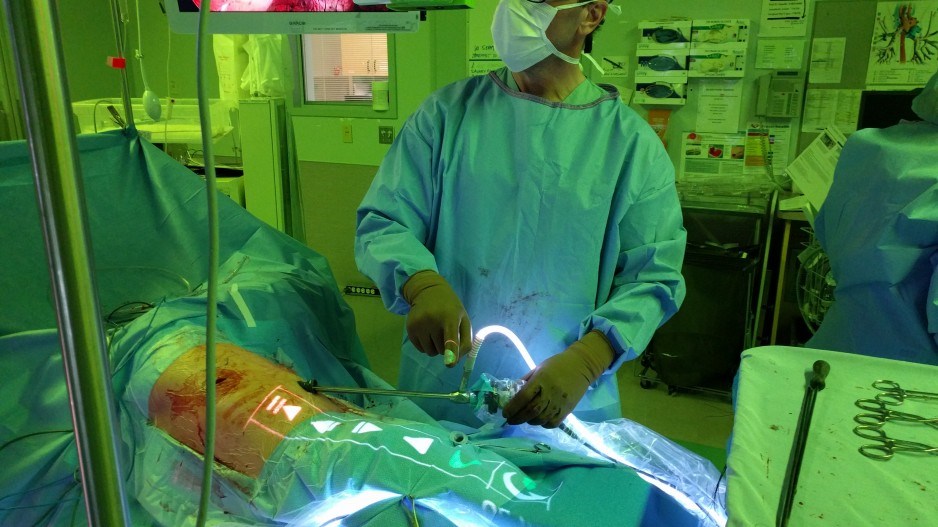Back in 2013, Vancouver General Hospital (VGH) radiologists David Liu and Behrang Homayoon were looking for ways to reduce lengthy operating room times.
During surgical procedures, they were required to leave the operating room’s sterile environment whenever they needed to examine radiology images on a computer. Using a mouse and a keyboard also meant the two had to take off their surgical apparel, which lengthened each procedure. The lengthy process also raised the risk of potential infection for patients.
In searching for a solution, they looked outside the medical industry and hooked up with Nima Ziraknejad, the founder and CEO of NZ Technologies. Based in Vancouver but also composing part of Surrey’s Innovation Boulevard, the technology firm draws parallels to Conquer Mobile, a Surrey-based medical tech company headed by a former Electronic Arts employee.
NZ’s core product is called Tipso – an acronym for touchless interaction with PACS in sterile operations.
“PACS is a common radiology image server installed in all hospitals,” said Ziraknejad, who received his PhD in 2014 from the University of British Columbia in machine vision and robotics and had previously worked in the automotive industry.
The idea behind Tipso appears basic at first glance. Doctors in the operating room use a holographic virtual menu with all the necessary controls, which are projected onto the patient’s bed drape.
“To visualize Tipso, imagine a surgeon in an operation looking at a patient’s CT image on the monitors,” Ziraknejad said. “He looks down to see a virtual zoom icon that is holographically projected over the surface of the bed where the operation is happening. He twirls his finger over it to zoom in on the image. This is what Tipso does – it allows a surgeon to easily control patient images directly from the operating space.”
During testing of the equipment at VGH, Liu and Homayoon found the technology reduced operating times by between 10% and 15%.
The technology is now being used at Surrey Memorial Hospital, which has the busiest emergency room in B.C. and is part of Fraser Health, the province’s largest health authority. With a $3.3 billion annual operating budget, Fraser Health doctors complete 457 surgeries a day on average.
James Bond, head of thoracic surgery at Surrey Memorial, “immediately loved the device,” Ziraknejad said.
Bond said the approach is novel and useful. He noted the value of the device for him is “co-ordinating my operations with imaging while staying at the bed because I don’t want to scrub out of the case. Also, staying cognitively focused is very important during the surgery as to not take attention away.”
John Chung, an interventional radiologist at VGH, recently tried Tipso, using the device three times during a three-hour blood vessel mapping procedure, which saved him roughly 15 to 20 minutes.
He also noted the device could help with doctor fatigue.
“The fluidity of patient care that it provides is even more valuable than the time savings,” Chung said.




